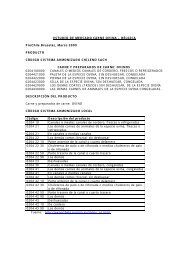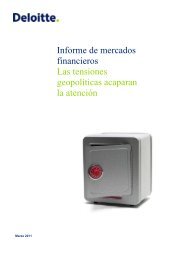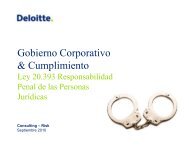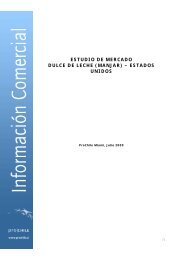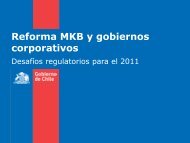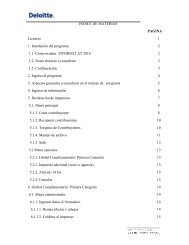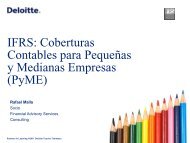Tax Advisers - Deloitte
Tax Advisers - Deloitte
Tax Advisers - Deloitte
You also want an ePaper? Increase the reach of your titles
YUMPU automatically turns print PDFs into web optimized ePapers that Google loves.
The Netherlands<br />
Protecting against tax risk<br />
Frits Barnard<br />
<strong>Deloitte</strong><br />
Amsterdam<br />
The public, investors and the tax authorities have become<br />
increasingly impatient with manifestations of white-collar<br />
crime, such as accounting scandals, options that are backdated,<br />
insider trading and tax schemes that are unable to stand up to<br />
official scrutiny. The climate created by this general disquiet<br />
also has implications for tax planning. While a sharp<br />
distinction, based on the principle of legality, has traditionally<br />
been made between tax planning on the one hand and tax<br />
fraud on the other, this distinction may have become blurred<br />
in practice. More than ever, it is important for companies to<br />
ask what they can do to protect themselves against both tax<br />
risk and the risk of damage to their reputations.<br />
New filing procedures<br />
Historically, a company would file a corporate tax return in<br />
paper form, attaching as many clarifications and exhibits as it considered appropriate.<br />
The tax inspector reviewed the return and raised an assessment, but at that point was<br />
not able to impose a penalty. Because an additional assessment could only be made<br />
(and a penalty could only be imposed) when the tax inspector discovered new facts or<br />
could prove that the taxpayer had not acted in good faith, companies were encouraged<br />
to file extensive explanations and exhibits together with their returns. As long as<br />
positions were properly disclosed in the return, penalties were almost never imposed,<br />
regardless of the merits of the position.<br />
Today, the requirement to file returns electronically leaves much less latitude for<br />
attaching exhibits and explanations. Now a tax inspector can impose penalties of up to<br />
100% of the under-reported tax due when raising an initial assessment. Although the<br />
Netherlands has no formal rules requiring the reporting of particular tax structures (as<br />
do the US and the UK), in practice, companies should seriously consider whether<br />
positions adopted in their tax returns are sufficiently defensible.<br />
Increased scrutiny<br />
The tax authorities are increasingly focusing their attention on the substance of<br />
structures and transactions rather than their technical, formal merits. The authorities<br />
are aware that multinational enterprises engage in very complex transactions that<br />
sometimes carry a substantial tax risk. While in the past the authorities were often<br />
content almost to facilitate such transactions, they are now clearly concerned to<br />
uncover the underlying tax issues. They have been successful in challenging certain<br />
offshore structures on the grounds that those structures lacked substance. Transfer<br />
pricing also has become the subject of much attention, and taxpayers are required by<br />
law to maintain full transfer-pricing documentation. Audits now encompass reviews of<br />
due diligence reports, minutes of board meetings and even e-mail correspondence.<br />
There may well be a point at which the tax authorities perceive that a transaction or<br />
structure is so lacking in substance that it may be regarded as tax fraud rather than<br />
legitimate tax planning.<br />
The tax authorities have a choice between imposing administrative penalties or<br />
referring a case to the public prosecutor. More and more cases are considered for<br />
prosecution and the Ministry of Justice has made more resources available for public<br />
prosecution, with the result that the number of high visibility cases that go to trial has<br />
increased over the last few years.<br />
The Dutch tax authorities have adopted the US approach of dividing taxpayers into<br />
risk categories to allow them to concentrate their enforcement efforts on those<br />
designated as a high risk. However, the classification is quite arbitrary, and amounts to<br />
little more than a system for punishing aggressive tax planning without legal basis.<br />
141




